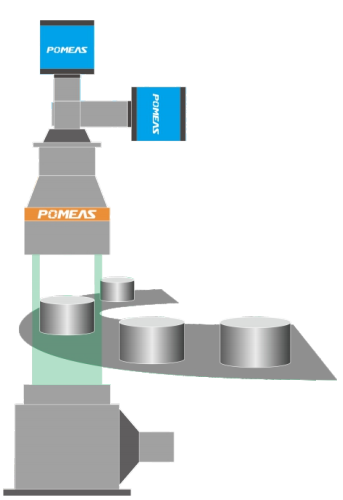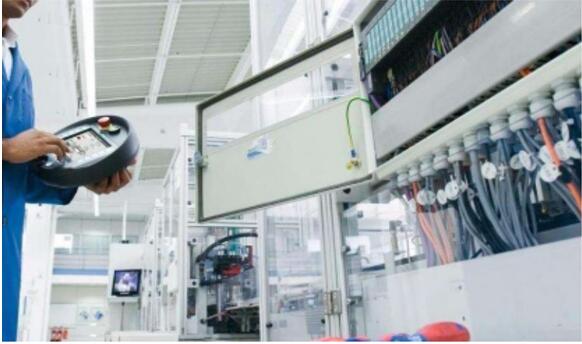Optical principle of double telecentric lens
The imaging principle of the double telecentric lens is by placing the diaphragm in the middle of the lens, so that the light in and out of the lens are parallel light, other light is blocked by the diaphragm, can not reach the imaging chip, from the two sides respectively, is the object of the telecentric and image of the telecentric lens.

1, object-side telecentric optical path: the aperture diaphragm is placed in the focal plane of the optical system in the image side, the main light of the object side is parallel to the optical axis, and the convergence center of the main light is located in the infinity of the object side. This design can eliminate the object side due to inaccurate focusing errors brought about by the readings, even if the object distance changes, the image distance also changes, but the image height does not change, that is, the measured size of the object will not change.
2, like a telecentric optical path: the aperture diaphragm placed in the optical system on the focal plane of the object side, like the main light parallel to the optical axis, the main light convergence center is located in the image of the infinite distance. Its role is to eliminate the measurement error introduced by the inaccurate focusing of the image side, even if the installation position of the ccd chip has changed, the size of the projected image on the ccd chip is unchanged.
Advantages of dual telecentric lenses to support two cameras working at the same time


1. Improve detection efficiency: in industrial production and other inspection scenarios, two cameras can simultaneously shoot from different angles or on different areas for inspection, one-time access to more image information, compared with a single-camera system, greatly reducing the detection time, improve the overall production efficiency. For example, in the inspection of automotive parts, one camera can shoot the front of the parts, the other camera can also shoot the side, rapid and comprehensive detection of various parameters of the parts to ensure product quality.
2. Enhance the flexibility of detection: the two cameras can be set up according to the specific needs of the inspection for flexible adjustment, both at the same time on the same object for the detection of different dimensions, but also on two different objects or objects of different parts of the detection, to meet the needs of a variety of inspection tasks. For example, in the production line of electronic components, according to the different structure of the components and the focus of the inspection, the inspection content of the two cameras can be flexibly arranged to improve the adaptability and versatility of the inspection system.
3. High resolution: most of the machine vision integrators in the ordinary lens can often only generate fuzzy images, while the double telecentric lens even with a small pixel image sensor, but also can generate high-resolution images, can meet the requirements of high-precision measurement and inspection, more clearly present the details and characteristics of the object, help to improve the accuracy and precision of the inspection.
4. Near-zero distortion: Ordinary machine lenses usually have an aberration higher than 1%-2%, which may seriously affect the accuracy level of measurement. Double telecentric lens through strict processing and manufacturing and quality inspection, can be strictly controlled in the distortion error of 0.1% or less, basically no need for distortion correction of imaging, thus ensuring the reliability and accuracy of measurement results.
5. No perspective error: In metrology applications for precision linear measurements, it is often necessary to observe from the standard front of the object, and many mechanical parts can not be precisely placed, and the measurement distance is constantly changing. The incident pupil of the double telecentric lens can be located at infinity, and it will only receive the main ray parallel to the optical axis when imaging, so it can perfectly solve the above problems and provide images that accurately reflect the real object, which provides a strong guarantee for precision measurement.
6. Ultra-wide depth of field: double telecentric lens can not only use the aperture and magnification to enhance the natural depth of field, but also has a non-telecentric lens unparalleled optical effect, in a certain range of distance from the object to move the object when the image remains unchanged, that is, the magnification remains unchanged. This feature makes in the detection of a certain thickness or not in the same plane of the object, can clearly present the image of the whole object, without the need to frequently adjust the focal length, improve the convenience and efficiency of detection.
7. Uniformity of the image of the illumination: double telecentric lens image of the main light parallel to the optical axis, so that the illumination distribution on the imaging plane is more uniform, thus ensuring the consistency of the brightness of the image, which is conducive to improving the quality of the image and subsequent image processing and analysis of results.
Product recommendation
TECHNICAL SOLUTION
MORE+You may also be interested in the following information
FREE CONSULTING SERVICE
Let’s help you to find the right solution for your project!


 ASK POMEAS
ASK POMEAS  PRICE INQUIRY
PRICE INQUIRY  REQUEST DEMO/TEST
REQUEST DEMO/TEST  FREE TRIAL UNIT
FREE TRIAL UNIT  ACCURATE SELECTION
ACCURATE SELECTION  ADDRESS
ADDRESS Tel:+ 86-0769-2266 0867
Tel:+ 86-0769-2266 0867 Fax:+ 86-0769-2266 0867
Fax:+ 86-0769-2266 0867 E-mail:marketing@pomeas.com
E-mail:marketing@pomeas.com
